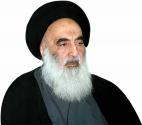Shaykh Mohammed Al-Hilli takes us on a journey to shirne of Samarra. Watch the promo video here and find out when you can watch the documentary on TV.

Our first ever Khoja Heritage Tour came to an end last week, after an exciting and informative 16 days in India. This historic trip gave senior citizens the opportunity to visit key locations in India, which are significant to our community.
The exciting 16 day tour started off in Mumbai and continued on to Bhuj, Kera, Mandvi, Dhordo, Mundra, Nagalpur, Lalpur, Jamnagar, Amreli, Mahuva, Bhavnagar and Ahmedabad. At each location, the group were taught the history and significance to the Khoja community. Throughout the trip, the group were met with warm welcomes and fantastic hospitality from the local people.
This Khoja Heritage Tour was a huge achievement for the Khoja Heritage Project team, who have been working tirelessly to ensure our community history and heritage is preserved and celebrated. Read more about this incredible trip, and see some images below.

Mumbai

The initial stop on the first ever Khoja Heritage Tour was Mumbai, the harbour city where the early Khojas lived and progressed in both trade and faith. Whilst here, the participants attended a welcome event at the renovated Mulla Qadirhussein Mehfil in Dongri, which served as a hub for the Khoja awakening movement in the late nineteenth century. At this ceremony, Shaykh Kumail Rajani, the Deputy Chair of the Khoja Heritage Project, gave a detailed historical account of the Shia community starting from the era of our 6th Imam, Imam Jaffer as Sadiq (as). He then went through the establishment of the Fatimid Imams in Egypt, Yemen and Iran and the migration of many peers including Peer Sadruddin to Sindh, Kutch and Kathiawar. This comprehensive talk was very educational and gave the participants a good starting point for a trip where they would continue to learn about Khoja history.
Whilst in Mumbai, the group visited many historical locations. They walked through the ancient Khoja Mohalla (Khoja area) observing various historical landmarks, including the Sunni Khoja and Ismaili Khoja cemeteries, Juma Laljee Musafarkhana and a visit to the Khoja mosque where they were warmly met by the Jamaat officials. They visited the Mughal Masjid where the Trustees spoke to them about the extensive history of the mosque. The participants enjoyed a pleasant boat ride at the Gateway for India, which had incredible views. Mumbai Jamaat held a gala dinner in honour of the guests, which was attended by some local government officials. Hon. MLA Shri Ameet Satam and Hon. Corporator Shri Rohan Rathod (elected representatives to Assembly & Corporation), welcomed the delegation and spoke about the rich culture of India and its diversified co-existing nature, which is a part of the rich heritage this country posses. They invited the participants to encourage business connections with India.
Bhuj

The group then flew to Bhuj, where they stayed for three days while visiting nearby places. Bhuj is a 15th century city and is the second home for any foreign Kutchhi speaking Khojas. The participants were very warmly welcomed by members of the Bhuj jamaat and office bearers of Kutch Federation. Alhaj Azizbhai Kothari of Bhuj Jamat, Alhaj Aunalibhai Salehmohamed and Alhaj Rajabalibhai Hasham spoke on various aspects of Khojas history in Bhuj. Shaykh Kumail passionately spoke about the need for the overseas community and the community in Kutch to join together and learn from each other. Rajabalibhai mentioned that the Kutch community had never been forgotten by their overseas brethren during their most difficult period and that now was the time to strengthen the brotherly bonds. The community in Kutch were extremely glad to receive the guests. The event ended with a delicious Kutchi dinner with khichdi and kadhi, lasan na ladu and ringa nu shaak, which the group really enjoyed! Whilst in Bhuj, the group went to Bhuj Boarding House where they spoke to some promising young students.
Nirona Village is close by to Bhuj and our participants spent some time there and saw a 300-year old piece of Rogan art, which had been created using castor oil for painting on fabrics.
Kera

Kera, in Kutch, is a location of great significance for Khoja history. The group visited Peer Gulamali Shah’s Shrine where the President of Kutch Federation, Rajabali Hasham, and Shaykh Kumail spoke on the history of Khojas in Kera. They visited a 250 year old graveyard of Khoja Ismailis and Ithna Asheris and another 500 year old cemetery. They visited the Kera mosque where they saw two buildings which were replicas of the shrines of Imam Husayn (as) and Hazrat Abbas (as).
Mandvi
Mandvi is a small town that the group visited whilst staying in Bhuj. One site they visited there was the beautiful Vijaya Vilas Palace, which was built during reign of Maharao Shri Khengarji III, the Maharao of Kutch, as a summer resort for the use of his son & heir to the kingdom, the Yuvraj Shri Vijayaraji. They visited Mandvi Port where they were told about the boat building that happened there and the sea voyages by our ancestors from that port to Africa. The group walked through the narrow winding Zanzibar-style streets to reach Mandvi mosque, which was a beautiful building built in 1924 and is managed by a Khoja family.
Dhordo

The Dhordo White Desert is known as the Rann of Kutch. Many years ago, an earthquake caused the diversion of the Indus towards neighbouring regions and since then the water from the Arabian Gulf gets trapped every year during the summer. This results in the formation of the bromide salt after the drying up of water. It is this salt which gives the white colour to the ground. A factory nearby produces the salt, which among various uses, is also used for sprinkling on roads during the winter. Whilst there, the participants were able to ride camels, which they really enjoyed!
Mundra
Mundra is the largest sea port of Asia and is where many of our community can trace their ancestors back to. The Jamaat officials warmly welcomed the group and took them to the mosque where Maulana Zamiul Hasan Jedi welcomed them with Quran recitation and the Jamaat Treasurer Brother Zakir Hussain with shairi recitation. Shaykh Kumail spoke about the four court cases during the British colonisation of India in 1850s, in which the judges struggled to establish the actual identity of the Khojas.
Nagalpur

Nagalpur is an 18th century village, which boasts a rich culture. When they reached, the group were met by Jamaat members who lined up to welcome them with flowers. The mosque, Imambargha and the building with a replica shrine of Imam Husayn (as) were all rebuilt following the earthquake of 2001.
Lalpur

Lalpur is a village on the banks of the Dhandhar River and preserves the memories of many community members. The group visited the Lalpur cemetery, which is 110 years old and was used by both the Ithna Asheri and the Ismaili communities. The participants went to the Jamaat there where the President of the Jamaat addressed the group.
Jamnagar
Jamnagar is the fifth largest city of Gujarat and is remembered as a home to many of our elders. The Khoja Heritage Tour group visited a graveyard there where they were able to trace some of their ancestors. The group visited a Hostel there, which is home to 17 boarders, who the group met. At the evening programme held at Jamnagar mosque, the President, Bashirbhai Khwaja, welcomed the group. Shaykh Kumail explained to the congregation the purpose of the trip and gave an extra dose of Khoja history. In celebration of the birthday of Bibi Zaynab (as), Maulana Syed Ali Zafar Kazmi recited the majlis.
Amreli

Amreli is the final resting place of the prolific author of Khoja History, Edalji Dhanji Kaba. The group visited the graveyard to pay tribute to him while they were in Amreli. No only was he a prolific writer about Khoja history, but he was also a source of inspiration to the community during the early days of the awakening of Khoja community. Shaykh Kumail Rajani gave a short history of the life of Marhum Edalji and how his writings made him the target of his opponents. The group visited the Amreli jamaat too.
Mahuva

In Mahuva, the group were met at the Najafi Hall by Alhaj Mukhtarbhai Boss, the President of Dargah Party Jamaat. Mahuva has approximately 15,000 community members, the second largest in India.
The group visited Jafari & Fatema English School where the girls presented flowers and Parvezbhai Merchant welcomed the group. The headmistress gave a report on the tremendous progress of the school in the last five years. The group were introduced to several school officials, including the trustee Alhaj Sajjadbhai Varteji, whose services in the field of education among others for over 30 years is well known. The school was established in 1989 was run by Al Imaan Charitable Trust until recently, when the Mahdi Foundation took charge. There are five different stages, from pre-primary to college level. After the introduction by the headmistress, Sheni Fazal and Jamila Dewji, on behalf of our group, expressed their pleasure at the progress of the school. They also advised that girls be encouraged to take courses which up to now had been for boys only. Shaykh Kumail Rajani spoke on the importance of education and the need for Muslim children to aim high, including achieving Nobel prizes.
The group visited Masjide Panjetani where Syed Mehdi Bapu, the President of the Sadat Jamaat, gave a history of the mosque. He said that the first Sadat in Mahuva arrived in 1456. He also told the group that after the renovation in 2014, the mosque now conducts five daily prayers for both men and women.
Some participants visited the girls hostel run by Abbasi Mission Trust in Mahuva. 89-year old Alhaj Nooralibhai Mukhi, a trustee of the hostel, gave a short history of the institution. Established in 1981, the hostel currently has 31 girls whose full cost of living and school is met by the Trust. There is also a boys hostel with 56 boys. The same trust also runs a subsidized medical clinic.
The Madressa Party Jamaat arranged an elaborate welcome ceremony for the participants and presented them with flowers and shawls. The President, Sajjadbhai Rajani, and Maulana Kausar Abbas Mukhi spoke at this occasion. Participants were presented with folders containing history of the Jamaat and its institutions. Shaykh Kumail provided details on the formation of Khoja Jamat in Mahuva, which the group all enjoyed learning about.
Bhavnagar

In Bhavnagar, the group headed to the Haji Naji kabrastan to pay homage to the great Khoja guide Allama Haji Naji Sahab. The Khoja Heritage Project has declared the site as a Heritage Site and the opening ceremony was also carried out. Shaykh Kumail took the opportunity to speak about the tireless work carried out by Allama Haji Naji by writing books and publishing countless periodicals.
They then visited Umme Kulsum Centers (a nursing home, home for challenged young girls, Hawza for sisters). The objective, as explained by Shaykh Kumail, was to appreciate such initiatives which caters the need for specially gifted people. The Vice President of India Federation, al-Haj Abbasbhai Bhojani, who is also actively involved in various projects of aforementioned trust, discussed the details pertaining to each of these projects.
Ahmedabad

Whilst in Ahmedabad, the participants visited the Pir Imamshah shrine located at Pirana, outside Ahmedabad. Shaykh Kumail gave a history of the Pirs and their beliefs and traditions. Pir Imamshah (d. 1513) was grandson of Pir Sadruddin, who preached Satpanth tradition. Pir Imamshah was the person responsible for early transformation of the Khojas towards this Satpanth tradition. The Imamshah shrine is considered as a hub for 'Satpanth' meaning 'true path' - a movement which was being followed by our forefathers during the late 15th and early 16th century. Pir Sadruddin had brought the concept of Das Avtaar (ten reincarnations) and Pir Imamshah structured the satpanth movement based on this. While Shaykh Kumail was discussing this with the group, one of the local caretakers of the shrine (dargah), Rawjikaka, asked the group to join them for a meal and he mentioned that Hazrat Ali was the 10th incarnation and Hazrat Mehdi would be our saviour - both being beliefs of Satpanth movement.
They visited Alhaj Nasir Dosani, the President of Kalupur Jamat of Ahmedabad at his residence as well and were shown documents of purchase of mosque and cemetery by Allama Haji Naji in the 19th century. Br Ahmed Master and other Jamat officials gave a history of the Jamat.
In the evening, a Closing Ceremony was held at Banquet Hall where Shaykh Kumail gave a final address to the group.
WATCH: Shaykh Kumail Rajani, Deputy of the Khoja Heritage Project, speaks about the trip and why it was so important to our community.
Related News
Related News
Meeting with His Eminence Ayatollah Al-Sistani
Read the Eid Mubarak message from The World Federation here in English, Gujarati and French. You can watch videos in English and French too. Click here for more details.













